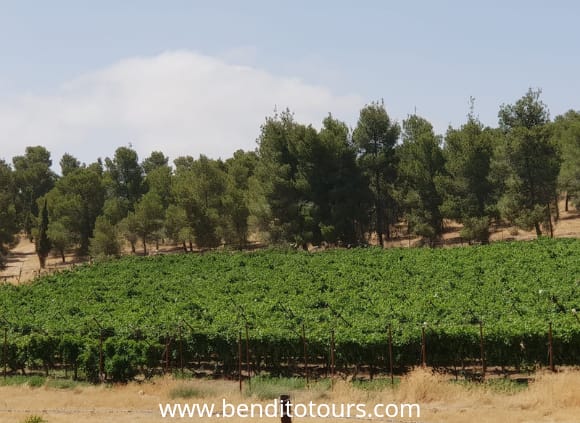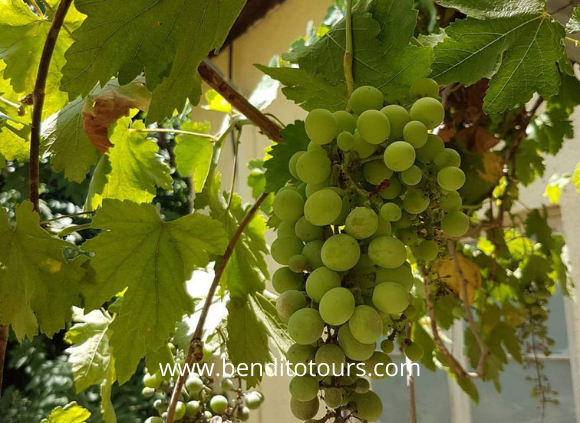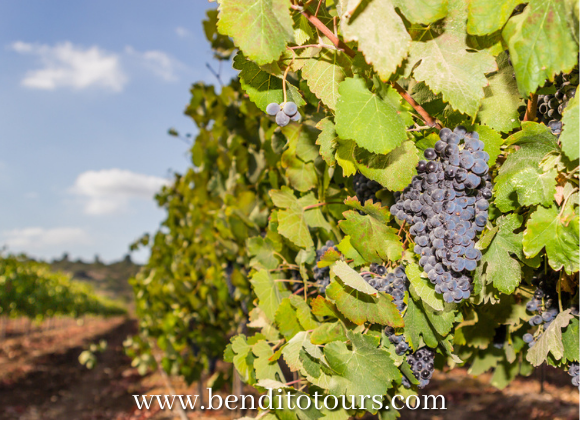Eilat
At the end of the Negev desert, in the extreme south of Israel, is one of the main spas in the country. Blending the magic of the desert and the mysteries of the sea, Eilat attracts tourists mainly during the winter months in the northern hemisphere, when low temperatures, snow and freezing winds lead Europeans especially to seek warmer options.
With about 20 thousand inhabitants and an average temperature of 21º - in the period from December to March, the Israeli winter - plus its closeness to Europe, Eilat has established itself as an attractive center for aquatic and radical sports, such as safaris in deserts, rock climbing and hiking, among others.
What few people know, however, is that Eilat is also one of the best places in the world for bird watching. The International Bird Watching Center is installed in the region. Scholars of the subject say that approximately one billion birds cross the area between the Mediterranean coast and the mountains of Jordan, transforming the southern tip of Israel into one of the places with the highest concentration of migratory birds in the world.
ÂncoraThe history of Eilat, however, did not start with its foundation in 1950, shortly after Israel's independence in 1948. The region where it is located is mentioned in the Torah, as shown in the text “… they left Ebroná and camped in Ezion- Geber… ”(Numbers, 33:35). This way the history of the Jews in the region then called Ezion-Geber began when, approximately 3,300 years ago, the Children of Israel roamed the Sinai Desert and arrived at that location. It was during Solomon's reign that the importance of the area, as a strategic commercial port, became known. The Torah reports the facts: “… King Solomon also built ships at Ezion Geber, which is near Elath in Edom, on the shore of the Red Sea ” (Kings I, 9:26). The strategic importance of the site, a gateway to Africa and the Far East, was immediately evident to Solomon.
ÂncoraThe port of Ezion-Geber kept prospering during the Kingdom of Judah period. King Jehoshaphat, for example, prepared an expedition for the legendary Ofir in search of gold: “… but they did not go; for the ships were broken at Ezion-Geber ”(Kings I, 22: 48). Remains of these ships were found by the American archaeologist Nelson Glueck, in addition to sheds in which the products to be loaded and the incoming goods were stored. Such discoveries were fundamental in confirming the existence of these ancient vessels dating from the Kingdom of Judah period.
Reason for a long land dispute between the Children of Israel and the people of Edom, Eilat passed from one domain to another through the centuries: after the Edomites came the Nabataeans; the Egyptians called her Berenice. Then it was the turn of the Greeks and the Romans - who called her Aila and then the Crusaders, who fortified the port and built a fortress on the Island of the Corals. During the four centuries that the Turks occupied the region, the city lost its identity and even its name, falling into oblivion. During the British Mandate period, Eilat functioned only as a police station called Umm Rash Rash. Its only inhabitants were a few Jordanian soldiers. During the War of Independence in March 1949, Israeli forces headed Operation Uvda, conquering the village. They arrived so quickly and without firing a shot that only at the last moment did they notice the lack of an Israeli flag to fly, announcing the victory. So a soldier took a blank sheet of paper and drew the symbol of the Israeli flag - the Star of David with a blue pen. The photo of this historic moment is part of the official collection of the government.
The city then ceased to be called Umm Rash Rash to become Eilat. Its strategic location, with exit to the Red Sea, is fundamental for Israel, justifying its conquest. North of the Gulf of Aqaba is Jordan and its port is just five kilometers east of Eilat. In the easternmost part of the coast is Saudi Arabia, approximately seven kilometers south of Aqaba; and, on the southernmost strip, Eilat borders Egypt. In other words, surrounded by Arab countries on all sides, Israel needed to control an exit to the sea.
ÂncoraThe development of Eilat itself began in 1956, after the Sinai Campaign. In April 1958 the ring road was opened that united the city with the rest of the country and domestic flights to several Israeli cities also started. The easy access made, according to official data, about 50 thousand people to go there to see something never seen before: the Red Sea and the land that had belonged to their ancestors. As the village prospered, the copper mines in Timna were reactivated and the first luxury hotels were built. Demand has grown so much that even Club Med currently has a complex on site.
Tourist attractions
Although Eilat is a center for water sports enthusiasts as it is considered one of the most spectacular underwater reserves, the city also offers many options for those who prefer to keep their feet on dry land or, at least, "firmer". Those who do not really like swimming can appreciate the beauty that is under water in an observatory that allows you to see hundreds of species as if they were inside a gigantic aquarium. One of the four in the world in this style, the observatory allows the view of reefs and underwater life at a depth of almost five meters. One of Eilat's newest attractions is Dolphin Bay, where you can swim with these mammals.
ÂncoraThe mark of the passage of the Crusaders through the region of Eilat is clearly outlined in the landscape of the Island of the Coral, in which they built a fortress whose walls are still standing. Located a kilometer and a half from Taba, Ilha dos Corais has always been called Jezirat, or Ilha dos Pharaós, by the Arabs.
Approximately thirty kilometers north of Eilat is located the Timna Valley National Park, which includes a wide area of the Wadi Aravá (Aravá Valley), which runs from the Dead Sea to the Gulf of Eilat (also called the Gulf of Aqaba). Timna is, in fact, the oldest mining center in history, the site of the world's first copper mine operation. Information about mining in the region of Timna is found in the Bible: "... a land whose stones are iron and from which, in addition to its mountains, metal can be excavated" (Deuteronomy, 8: 9).
Evidence of mining activity can still be seen in the green lava flow over the “Vale dos Ferreiros” in which, according to biblical chroniclers, more than 80,000 miners worked.
Timna became the most important copper production center during the reign of Solomon, who was the main exporter of this ore during antiquity, having been called "The Great King of Copper". It was under the flourishing mining industry of Timna that the wealth of this great biblical monarch was built. The precious metal for making worship objects for the Temple in Jerusalem was mined from that area. To improve performance, Solomon would have brought in experts from Phenicia. Hiram, the son of a widow of the Naphtali tribe, was tasked with fusing the utensils for the Temple. This episode is narrated in Kings I, 7: 13,14. Copper was also exchanged for gold, spices, ivory and other goods that arrived at the port of Ezion-Geber, built by Solomon to increase the development of the region.
His theories were confirmed with the discovery of the remains of a furnace, with ventilation channels organized in the north-south direction, through which the continuous winds of the Aravá Valley blow, working as pockets for air circulation. The old mines were also explored by the Romans and later by the Nabataeans, and were then abandoned for approximately 1,800 years, until, in 1950, after Israel's independence, the government opened the new mines in Timna, retaking exploration of the area.
ÂncoraThe Eilat region offers yet another option for tourists who are looking for new experiences. It is the Hai-Bar Wildlife Park. Located in the Aravá Valley, it was founded in 1961 with the aim of trying to restore the area's original fauna. Of all the species mentioned in the Bible, twelve have now become extinct. Some specimens of those that survived were brought to the area, where the presence of acacias typical of the savannas and natural pastures allowed their reproduction.
Eilat, like most Israeli cities, can be considered a living symbol of the rebirth of the State of Israel in the land of the ancestors of the Jewish people. Keeping the vestiges of a glorious past pronounced by bold and creative monarchs, the city has been continuously developing, using of all the tools of modern society. Blending the old with the new, Eilat is increasingly establishing itself as a leisure center both for those seeking a reunion with its history and for those who want to enjoy the beauties of a unique natural setting, in which the desert and the sea come together to offer a unique show in the Promised Land.








